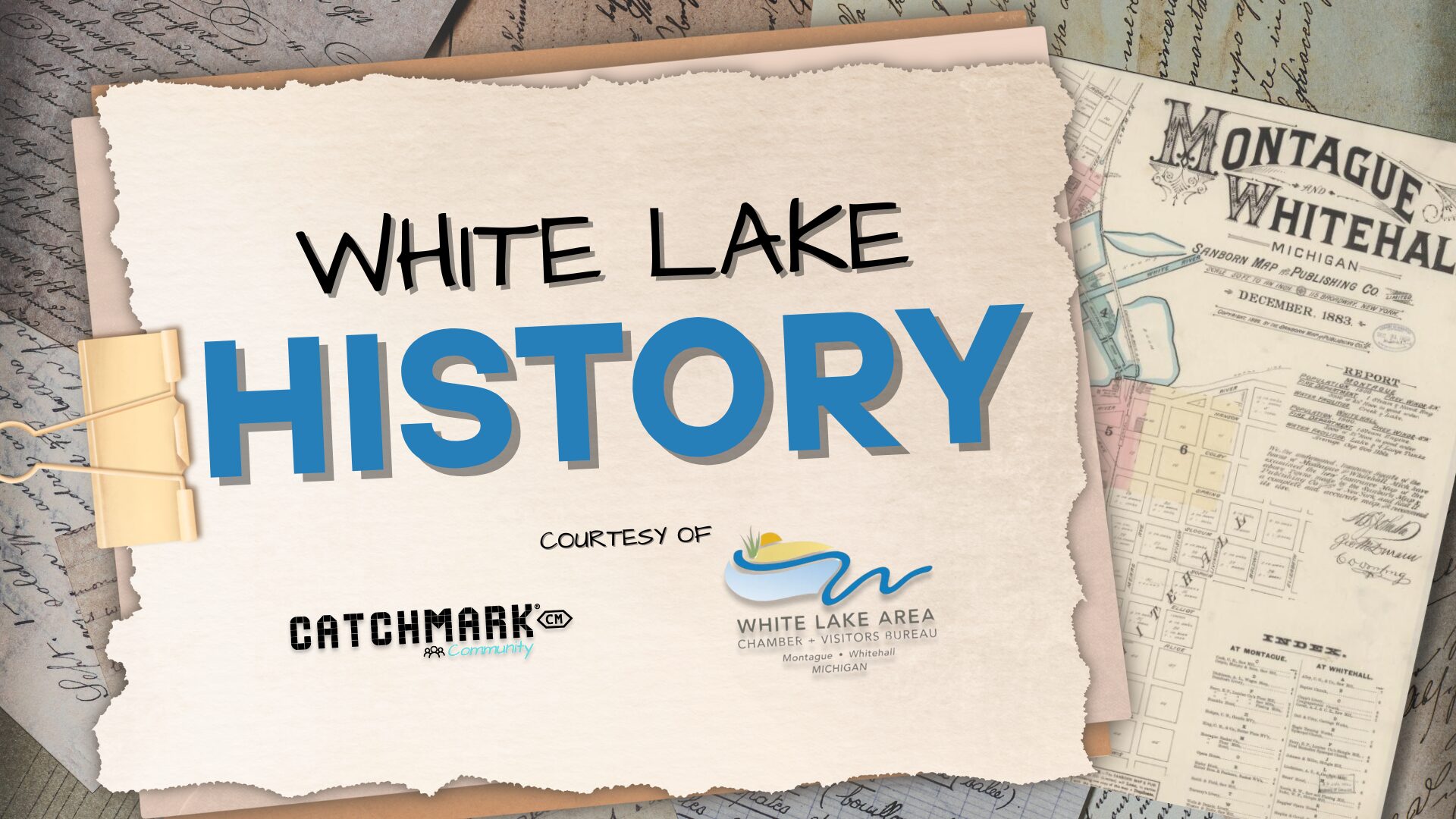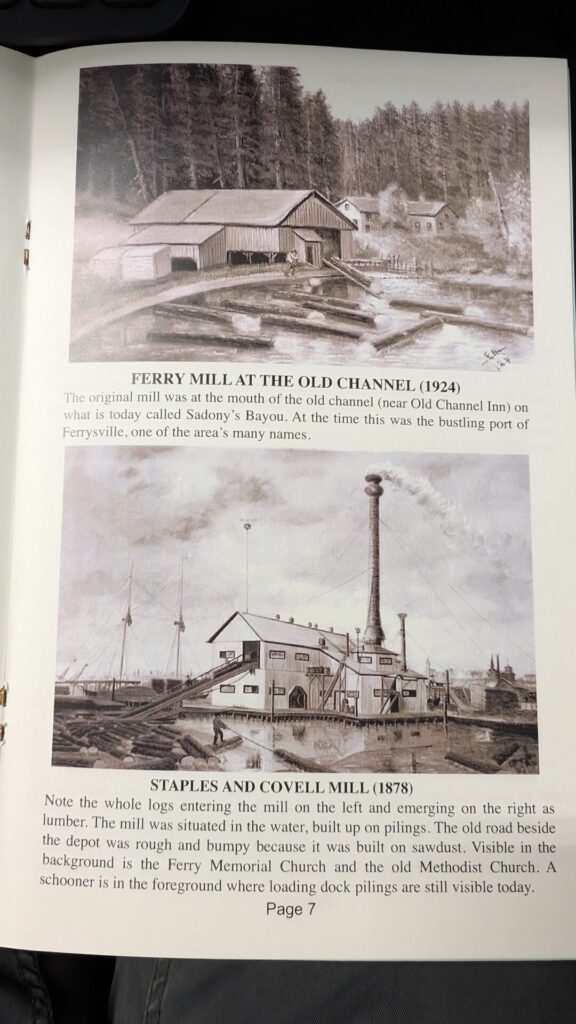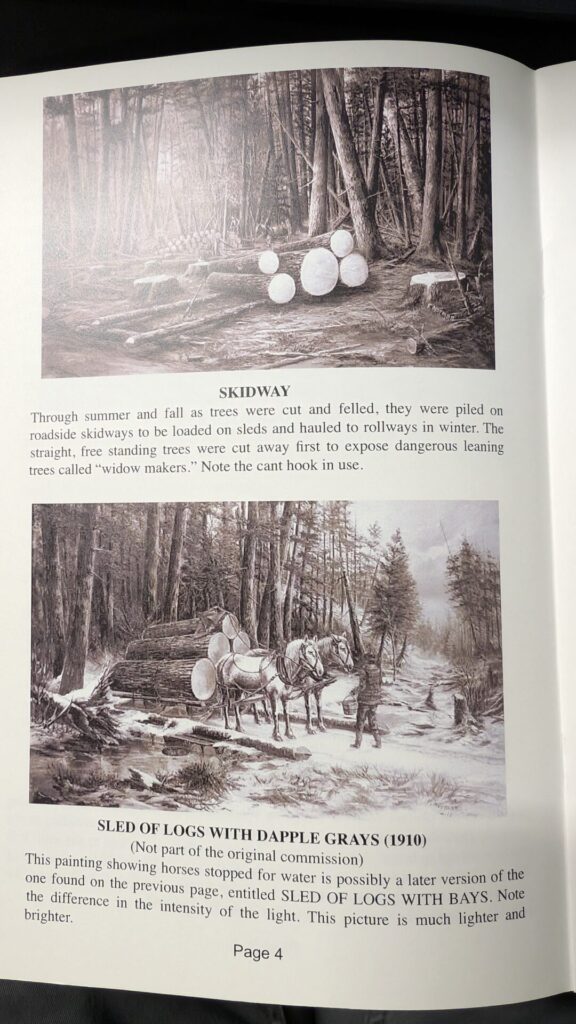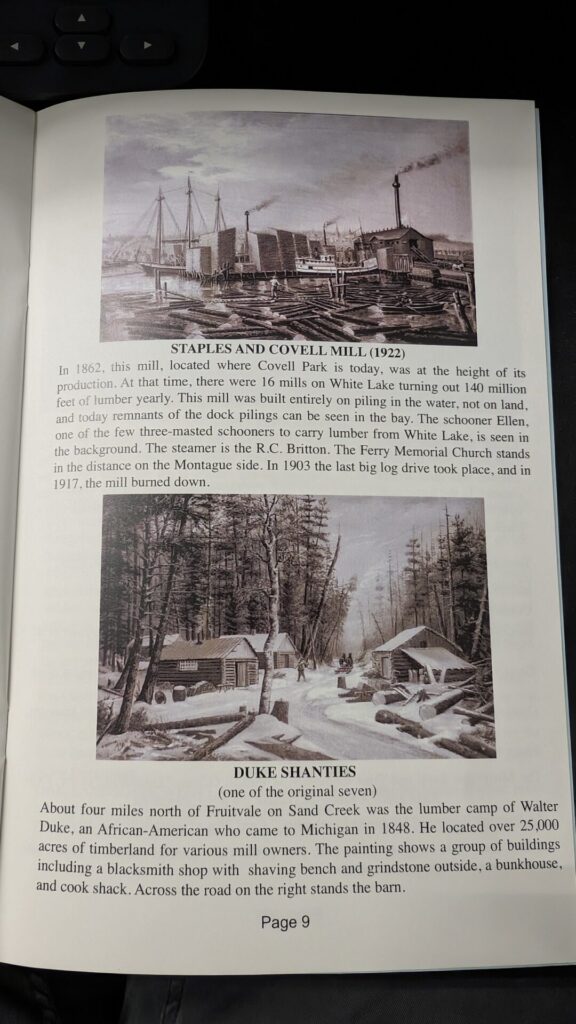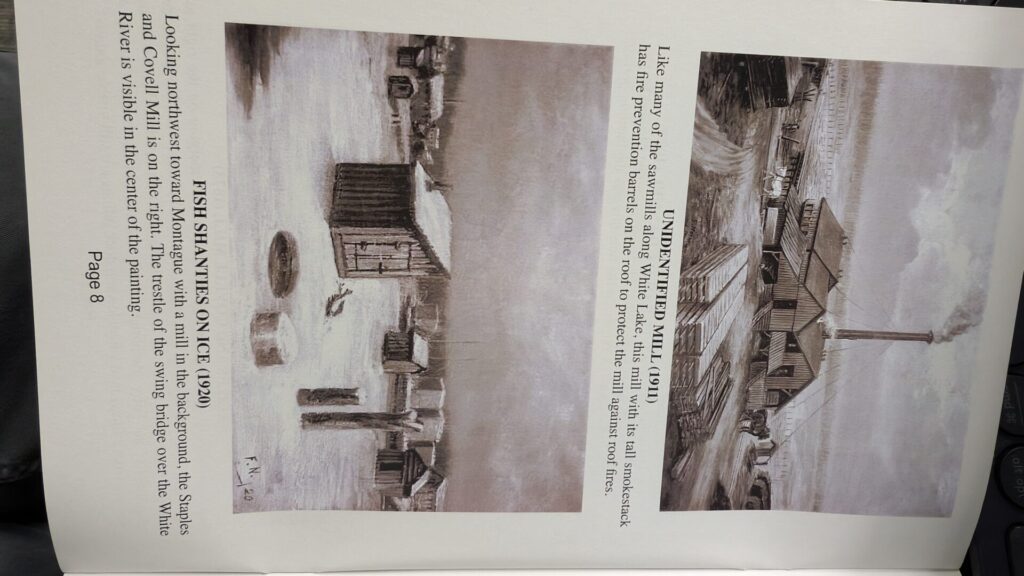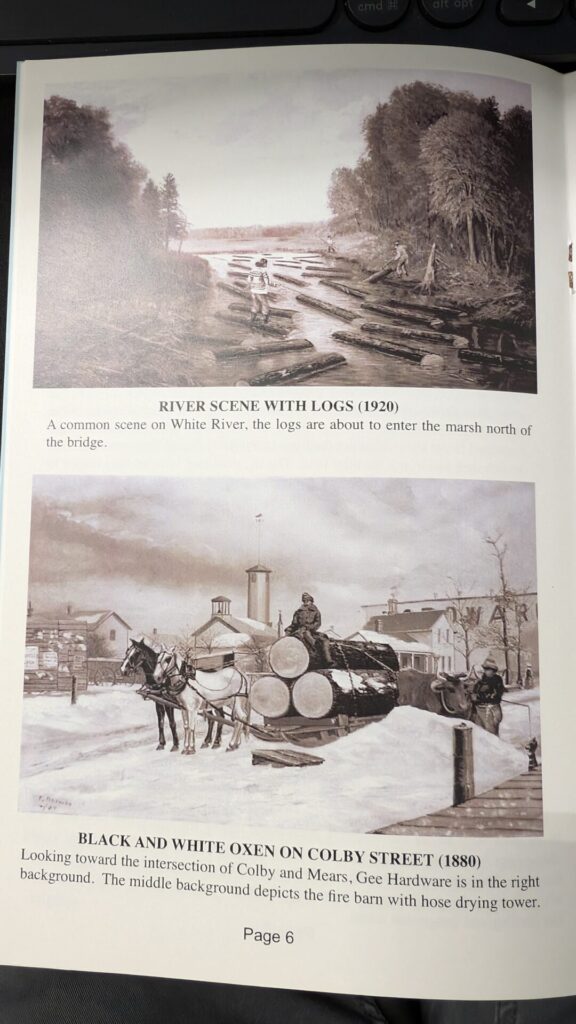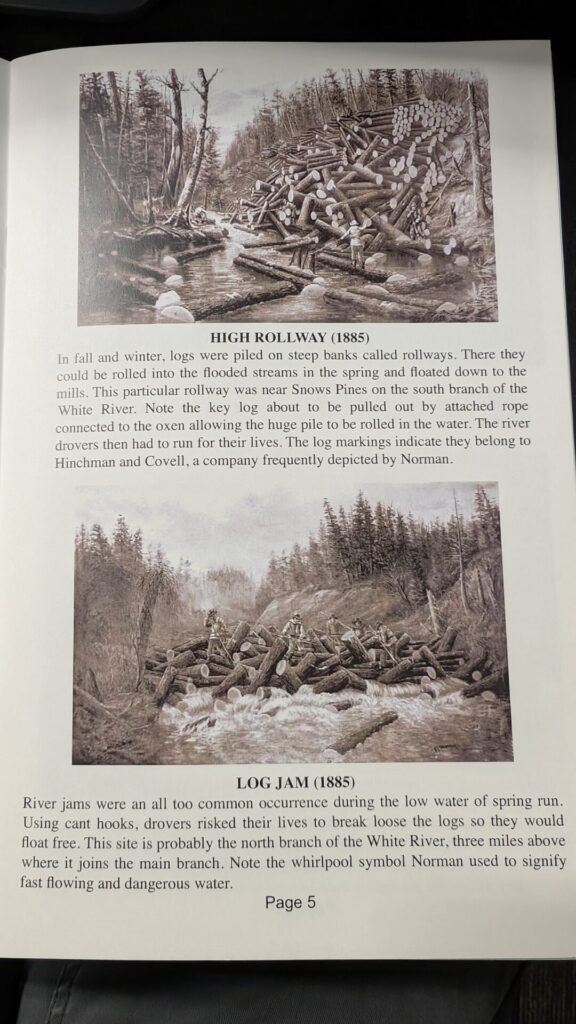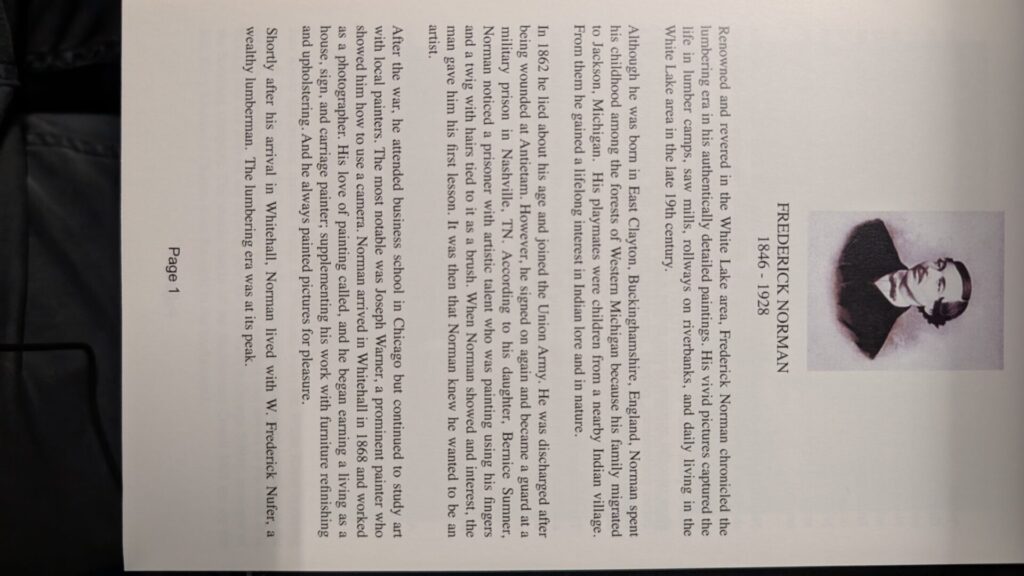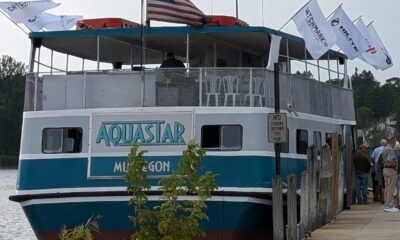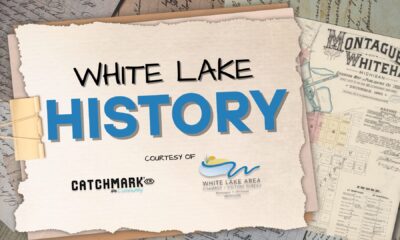Early Life and Inspiration
Frederick Norman’s legacy is rooted in the White Lake lumbering era. Born in 1846 in East Clayton, England, Norman’s family later moved to Michigan, where he grew up near Jackson. His childhood playmates were Native American children, which sparked a deep appreciation for nature and storytelling. During the Civil War, Norman lied about his age to join the Union Army. While serving later as a guard in Nashville, he saw a prisoner painting with a makeshift brush. That moment inspired him to become an artist.
Career and Move to Whitehall
After the war, Norman studied business in Chicago and trained under local artists. He also learned photography and began earning a living painting signs, carriages, and homes. Even so, Norman’s heart belonged to painting scenes of the Michigan wilderness. In 1868, he moved to Whitehall, where he began documenting the lumbering era. His detailed work captured real life—oxen dragging logs, men working in the snow, and booming grounds along the White River. Each painting showed daily challenges and routines from the late 1800s.
Collections and Preserved Works
Many of Norman’s best-known works were commissioned by W. Frederick Nufer, a wealthy lumberman. He asked for seven paintings to show the full process of logging. These were later given to the Whitehall Bank and eventually made public by the White Lake Area Historical Society. Other paintings now belong to private collectors. The Montague Historical Museum owns his Civil War scenes. Families like the Uithovens and Pitkins also hold his paintings, which include peaceful river scenes, fruit studies, and winter landscapes. Each one helps tell the story of Michigan’s past.
Legacy in the White Lake Area
Because of Norman’s eye for detail, future generations can see what the lumbering era looked like. His work includes landmarks like the Staples and Covell Mill, the swing bridge in Montague, and the bustling old channel near Ferrysville. He didn’t just paint buildings or people—he painted their way of life. Thanks to the White Lake Area Historical Society and other caretakers, Norman’s legacy remains strong. His art continues to connect people to a time of hard work, rich history, and natural beauty along White Lake.








